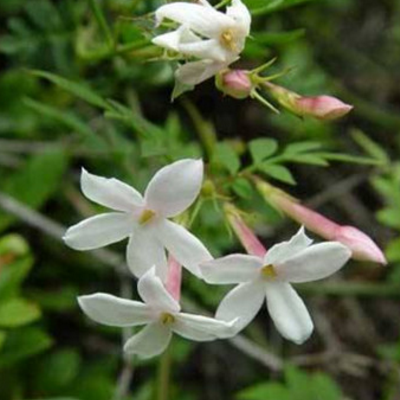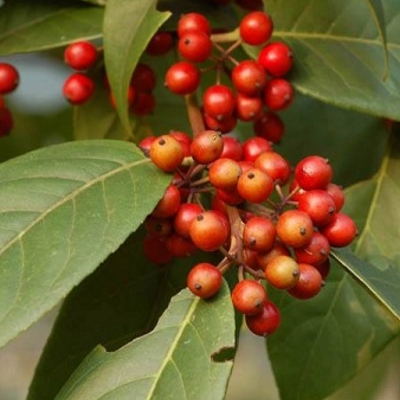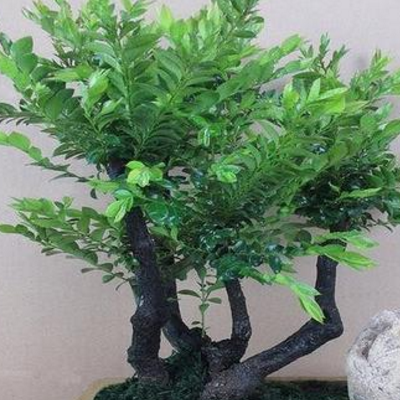Is the cultivation method of square flowers jasmine?
Plain square flower, this is also a kind of plant, can be good-looking, blooming is a small white flower, so what is the breeding method of square flower? Is it the same as Jasmine:
The culture method of square flower:
1. Temperature
Their requirements for temperature are still relatively high. Most of them are suitable for growing in the environment of 20-30 ℃. It is relatively cold in winter, which basically hinders the growth of square flowers and makes it suffer from greater obstacles. Because the variety of this kind of flower varies from place to place, the minimum temperature that can be tolerated also varies. In the cultivation, it must be treated separately according to the varieties of different regions, so that they can meet the requirements of their winter.
2. Moisture
The growth stage of this kind of flower still needs a lot of water, so give it enough water. Water generally includes the water in the soil and the water in the air that you breathe. So the humidity in the living environment is very important to them. However, because there are many different places where it originally grew, as well as the composition of its shape and the diversity of its growth, their humidity requirements for the environment are also different.
3. Lighting
If plain square flowers are to bloom, they need more light in order to meet their basic needs. Generally speaking, square flowers grow in the shade of trees, so they are more suitable for planting in semi-shady places. But lighting also depends on its type, so the demand for light is also different, so we must pay attention to this point. And the influence of light is not only one aspect, its influence is multifaceted, among which the intensity and quality of light are the two most important aspects of light. In this way, if we breed according to the situation, and reasonably control all the requirements for its growth, we will be able to make it grow better, grow more luxuriantly, and look better.

Is Sufang flower jasmine?
Sufang flower and jasmine are really different. Let's take a look at the difference:
1. Plain square flower
It is 0.4-5 meters high. Branchlets angled or sulcate, glabrous, sparsely puberulent. Leaves opposite, pinnately parted or pinnately compound, blade and leaflet glabrous or sparsely pubescent on both surfaces; terminal leaflet ovate, narrowly ovate or ovate-lanceolate to narrowly elliptic, fruit globose or elliptic, changing from dark red to purple at maturity. The florescence is from May to August and the fruiting period is September.
2. Jasmine flower
It is as high as 3 meters. Branchlets Terete or slightly compressed, sometimes hollow, sparsely pilose. Leaves opposite, simple, leaf blade papery, round, elliptic, ovate-elliptic or Obovate, both ends rounded or obtuse, base sometimes cordate, slightly sunken or sunken above, lower protruding, veinlets often conspicuous on both sides, slightly raised, glabrous except for tufts between axils of lower veins, other glabrous; lobes oblong to subrounded, apex rounded or obtuse. The fruit is globose and purplish black. The flowering period is from May to August and the fruiting period is from July to September.
The breeding method of plain square flower is introduced here, should pay attention to the difference with jasmine, but do not admit mistake.
The Culture methods and points for attention of Plain Flower
Latin name Jasminumofficinale L. var. OfficinaleL.
Also known as Xiuyinhua, Manjasmine, Sufang
The plant kingdom.
Magnoliophyta, angiosperm phylum
Dicotyledonous class Liliopsida
Subclass synpetalous flower
A transitional flower order.
Suborder Oleacea
Cemuciaceae Oleaceae
Subfamily Jasmininae
Family element Xin clan
Belonging to the genus Jasminum
Seed prescription
English name Large flower jasmine Flower
Plain square flower, alias: Yesi Ming, Latin name: Jasminum officinale L. Var. Officinale L. Oleaceae, Jasminum is a climbing shrub, 0.4-5 meters high. Branchlets angled or sulcate, glabrous, sparsely puberulent. Leaves opposite, pinnately parted or pinnately compound, blade and leaflet glabrous or sparsely pubescent on both surfaces; terminal leaflet ovate, narrowly ovate or ovate-lanceolate to narrowly elliptic, fruit globose or elliptic, changing from dark red to purple at maturity. The florescence is from May to August and the fruiting period is September. Produced in Sichuan, southwest Guizhou, Yunnan, Xizang. Raw valleys, ditches, thickets or forests, or alpine grasslands, 1800 m above sea level. Widely cultivated all over the world.
1. Morphological characteristics.
Climbing shrubs, 0.4-5 m high. Branchlets angled or sulcate, glabrous, sparsely puberulent. Leaves opposite, pinnately parted or pinnately compound, with 3-9 leaflets, usually 5-7, undivided leaves at the base of branchlets; leaf rachis often narrowly winged, petiole 0.4-4 cm long, glabrous; leaves and leaflets glabrous or sparsely pubescent on both surfaces Terminal leaflet ovate, narrowly ovate or ovate-lanceolate to narrowly elliptic, 1-4.5 cm long and 0.4-2 cm wide, apex acute or acuminate, sparsely obtuse, base cuneate, lateral leaflet ovate, narrowly ovate or elliptic, 0.5-3 cm long, 0.3-1.3 cm wide, apex acute or obtuse, base rounded or cuneate. Cymes umbellate or subumbellate, terminal, sparsely axillary, with 1-10 flowers; peduncle 0-4 cm long; bracts linear, 1-10 mm long; pedicels 0.4-2.5 cm long; calyx cup-shaped, smooth glabrous or puberulent, 1-3 mm long, lobes 5, conical linear, 5-10 mm long Corolla white, or red outside, white on the inside, Corolla tube 1-1.5 (- 2) cm long, throat 2-3 mm in diameter, lobes often 5, narrowly ovate, ovate or oblong, 6-8 mm long, 3-8 mm wide; style heterogenous. Fruit globose or oval, 7-10 mm long, 5-9 mm in diameter, changing from dark red to purple at maturity. The florescence is from May to August and the fruiting period is September.
The planting method of jasmine flower bonsai net flower conservation column: the planting method of jasmine will introduce to you the cultivation method of jasmine, how good jasmine is, and the prevention and control of diseases and insect pests of jasmine (1) Overview of jasmine jasmine is also known as jasmine, fragrant soul, Molly, no, no. The height of the plant is 0.52m. Leaves opposite, elliptic, 3-9 cm long. Cymes terminal, with 3-9 flowers, Corolla pure white, single or double, some become dumb red when withered, very fragrant, new shoots bloom, flowering from June to September in North China. It can promote cultivation in greenhouse and blossom in winter under warm conditions. The leaf color is green, the design color is white, the fragrance is rich, deeply loved by the broad masses. It is used to beautify the courtyard and balcony, fresh and pleasant, sending bursts of fragrance from time to time, giving people a feeling of returning to nature. A large number of Moli flowers are cultivated in South China and K: River. the flowers are used as spices of smoked tea, and the smoked tea is the famous jasmine tea. Jasmine prefers a warm, humid and sunny environment, with emerald green leaves, white flowers and rich aroma, making it the most common aromatic potted flowers and trees. In the genus Jasminum, one of the most famous is double jasmine, which is commonly known as jasmine. Jasmine has good health and beauty effects, can be used in diet, can be used in the production of jasmine tea. [ornamental value] there are many white flowers from June to October, which are fragrant and can be bottled and brewed tea besides potted plants. [habits] (1) like light. (2) like high temperature, the suitable temperature is 20 ~ 30 ℃, stop growing below 10 ℃, and freeze to death below 5 ℃. (3) like fertile and acidic soil. (2) for jasmine cultivation, potted jasmine can bloom three times a year if it is well maintained. Temperature: like a warm environment, jasmine, hairy jasmine, plain square flowers overwintering the lowest temperature of more than 10 degrees Celsius, Yunnan Jasminum, Tanchun flowers can be as low as 5-7 degrees Celsius. Light: like to allow enough sunlight, the ®season can be cultivated in the open field with direct sunlight, and greenhouse cultivation in winter should also have direct sunlight. Moisture: always keep sufficient water in the basin soil, but avoid stagnant water in the basin soil. Air humidity: like moist air, can often spray water around the plant. Change the basin. Change the basin in spring as needed. Jasmine needs to be renewed after several years of cultivation, and it is best to replace it with a new plant. When changing the basin, the old plant will remove the decaying old branches, divide them into new parts and then replant them. Propagation: cutting with branches in spring, it is easy to take root. By the way, jasmine is the national flower of the Philippines, Tunisia and Indonesia, symbolizing love and friendship. [main points of cultivation] (1) Propagation by cuttage (see question and answer 122 for details) can also be put on the pot when the pot is changed in spring. (2) 5% base fertilizer should be added to the basin, and the basin soil should be mixed with fertile compost soil and river sand. The pot was put into the basin in March to April. (3) fertilization should be applied once a week from April to October, from light to dense. Fermented oil, low water, human and animal dung or fishy water can be used. Add water 8 ~ 10 times at the initial stage and 3 ~ 4 times at the flowering stage (see question and answer 123 for details). (4) watering the basin soil after it is dry, watering every morning and evening in midsummer, and replenishing the spray if the air is dry. But dormant in winter, the basin soil is only slightly moist, and if it is too wet, it will lose leaves and rot roots. (5) the germinating ability of branches is strong, it is necessary to pick the heart and shape when changing pots in spring, and to re-cut and renew in full bloom to facilitate the germination of new branches and flowers. Leaves should be picked after each flowering period. (6) potted flowers should be placed in a sunny place. The leaves enlarge without flowers in the shade. (7) Spodoptera litura and red spiders are often harmed, which should be prevented and controlled in time. Related article: what is the reason why jasmine only grows leaves and does not bloom? Why does jasmine have yellow leaves? How to save it? How to prolong the flowering period of jasmine? How to propagate jasmine by cuttage?
- Prev

The planting method of red fruit holly what is the price of 15 centimeters?
Red fruit holly, this kind of tree is green, grows super luxuriantly, and needs to blossom and bear fruit, so what is the planting method of red fruit holly? What is the price of red fruit holly 15 cm: the planting method of red fruit holly: the choice of method can be planted by seed.
- Next

What's the difference between a rich tree and a safe tree when its leaves fall off?
The rich tree is a plant with a good moral name, so it is also a very suitable fengshui plant for breeding, so what if the rich tree loses its leaves? What's the difference between a rich tree and a safe tree? What if the rich tree loses its leaves: the first reason for too much water is probably too much water.
Related
- Fuxing push coffee new agricultural production and marketing class: lack of small-scale processing plants
- Jujube rice field leisure farm deep ploughing Yilan for five years to create a space for organic food and play
- Nongyu Farm-A trial of organic papaya for brave women with advanced technology
- Four points for attention in the prevention and control of diseases and insect pests of edible fungi
- How to add nutrient solution to Edible Fungi
- Is there any good way to control edible fungus mites?
- Open Inoculation Technology of Edible Fungi
- Is there any clever way to use fertilizer for edible fungus in winter?
- What agents are used to kill the pathogens of edible fungi in the mushroom shed?
- Rapid drying of Edible Fungi

